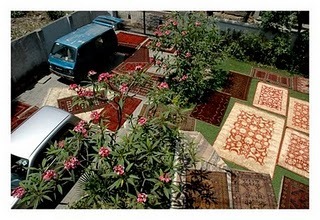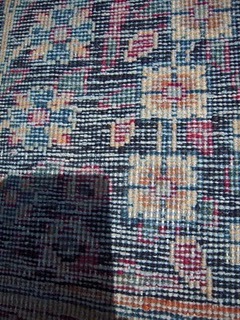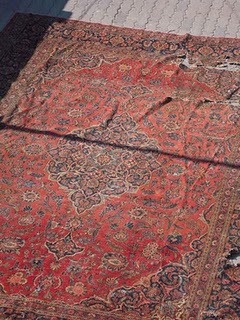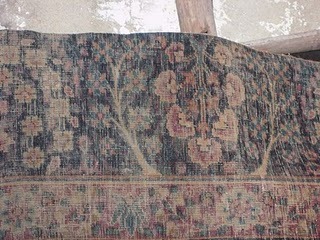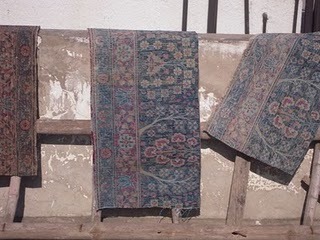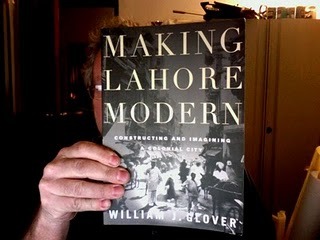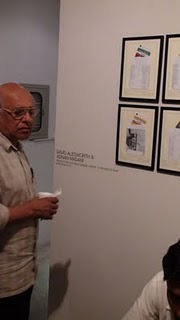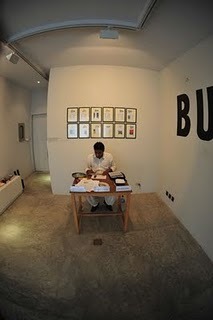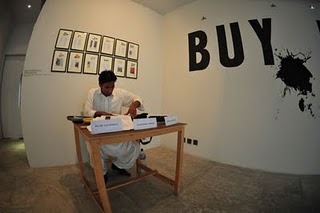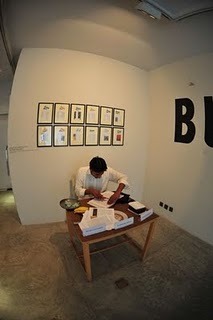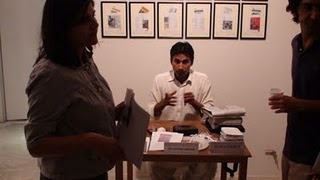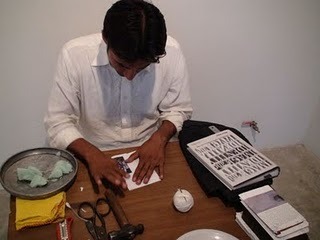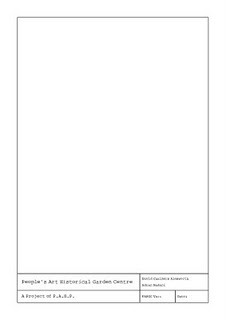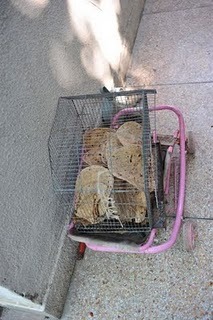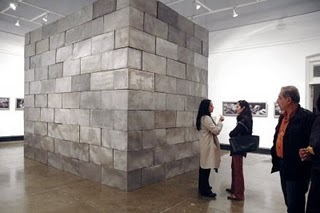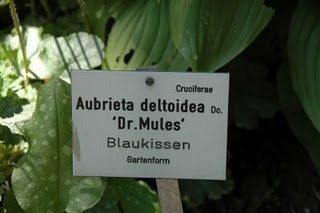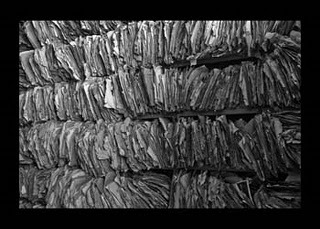http://www.vam.ac.uk/content/exhibitions/exhibition-jameel-prize/jameel-prize-4/#David%20Alesworth
Karachi Pop
Hammad Nasar’s piece for the Guggenheim site.http://blogs.guggenheim.org/2013/02/11/karachi-pop-vernacular-visualities-in-…
Art for “The Post-Colonial Garden as a Palimpsest”
These are not mine, well maybe a few are by now and some are with my friends. It was a day of viewing rugs, mostly Chobi’s (Zeigglers) here.
…and part of another
Some details of the finer piece.
The blue Persian is a much finer piece but totally threadbare, worn right down to the structural weft and weave of its base, from a distance it’s almost monochrome. They are both also full of dust despite several previous washings. The motifs are of course all plant and garden based. These rugs would seem a viable visual metaphor a cultural reading of “the garden”. Here it is played out as as paradise itself. A contained garden of fountains, bird song, fruit bearing trees within in an ordered orchard. An oasis of sorts.
I decided to cut out the still intact central portion today, and have kept the borders to experiment on as well. I’m intending to somehow work into and onto these rugs. At present it seems to me that the only authentic way to do that is to actually stitch another layer right into their very fabric, perhaps this should read from both sides as in fact this threadbare one does. Now there is no hierarchy of front or back, its much the same.
I will have to have to stitch the edges to prevent this one disintegrating. It felt sacrilegious to be cutting into this once magnificent rug but if I can use it in my work it will have another lease of life.
I think I’ll begin with some photoshoped treatments as mock-ups. The rug represents a pre-colonized traditional cultural thread (forgive the pun) or does it? Their history in this region is not so pure or simple.
William Glover’s new book “Making Lahore Modern” Constructing and imagining a colonial City, just arrived. Its only been a week or so since I ordered though Amazon’s express delivery cost me as much as the book itself!
“Flying Carpet”
A work by Berlin based Alex Fleming shown at Art Dubai a few years ago. I instantly recognized it as a work I should have, could have made! (don’t you hate it when that happens?) We became friends and I sent him an Afghani War rug subsequently.
“P.A.H.G.C.P.”
This is the most recent completed project. Participating in the current group exhibition (curated by Mehreen Murtaza and Umer Butt) at Greynoise Gallery, Lahore.
In the show entitled “Patrons of Oh! My God i can buy Art!” opens 25th October 2009.
Our work is entitled:
<meta name=”Title” content=””> <meta name=”Keywords” content=””> <meta equiv=”Content-Type” content=”text/html; charset=utf-8″> <meta name=”ProgId” content=”Word.Document”> <meta name=”Generator” content=”Microsoft Word 2008″> <meta name=”Originator” content=”Microsoft Word 2008″> <link style=”font-weight: bold;” rel=”File-List” href=”file://localhost/Users/davidalesworth/Library/Caches/TemporaryItems/msoclip/0/clip_filelist.xml”> <style> </style> “People’s Art Historical Garden Centre”
A project of P.A.H.P.
(People’s Art and Historical Project)
David Chalmers Alesworth and Adnan Madani
Variations: 1/12
Recycled paper and live seeds.
October 2009
PAHP: Tomorrow’s History, Today.
“The P.A.H.G.C. aims to create a new and green space for supra-critical reappraisal of the use-value of art history (as written from the point of view of colonial and post-colonial
govern-mentality), by converting the plastic objects of art history into objects of everyday fetish use for the subjects of history. The dissemination of alter-knowledge and the insemination of alter-culture are the short, medium and long term goals of this project, which conforms closely to the will of the people while correspondingly attempting to shape the contours of that will and its future forms.”
David Alesworth
Adnan Madani
Lahore
Oct. 2009
Video documentation and context for “P.A.H.G.C.P”
Mahmood with a collection of raw material.
Oxford University Press’s “Image and Identity” by Akbar Naquvi.
In this book he describes my practice in the mid 1990’s as being more orientated towards
horticulture than art making.
Iqbal Geoffrey to whom this work is in part homage.
Mahmood at work with editioned works behind him.
In the gallery prior to the opening.
The rosta of participating artists in this group show.
Gallery goers and Mahmood at work producing useful paper bags from this troubled text.
Gallery visitors were encourgaded to take away free art-historical bags containing live vegetable seeds.
The work place, finished bags to the right.
The seeds in the foreground are added to each bag.
They are egg plant, melons, cabbage and chillies.
The twelve editioned works, each bag contains some live seeds,
the local seed packets are inserted into each art-historical bag.
Each bag/seed packet combination is mounted on a facsimile herbarium sheet
and framed with acid free archival materials.
“Roti Home” (Work)
How to make work from incidental encounters such as this?
Old roti’s being stored in a disused bird-cage on top of a broken dolls push-chair.
I’m going to set it up on a plinth under studio lights and see what happens.
Maybe track around it with a video camera. recently got a Nikon 35mm adapter for the XL-1.
Transart Submission: 15th June 2009
Research Synopsis 2009
Research Proposal 1.
Studio Practice: The Autobiographical and the public.
In relation to the above enquiry and as an extension of my practice in 2008-2009 I would continue to make autobiographical work. I see the task in hand now to be a full integration of my life, as outsider and “other” in Pakistan with broader societal and global concerns. The thread of this may be taken up from the “Domestic Displacements” work I undertook in Lahore in May and June of 2009.
Research-Proposal 2.
Building upon “The Garden of Babel” 2009 as a format I would initially work towards examining various sacred texts in translation. Those of the Abrahamic religions including Judaism, Christianity and Islam and possibly others in the broad grouping in relation to notions of the garden of Eden. In this respect I would be particularly focusing on plants mentioned there. Using this with allied horticultural enquiry, and in consultati0n with various scholars I would build a taxonomy of Eden. The works may be grided digital prints of botanical and zoological accession labels, as are to be found in Zoos and botanical gardens. I would have to create reasonable approximations of specifically mentioned plants of Eden, I would aim for around 180-300 plants per work. I would then make the labels in etched plastic laminates, as authentic labels. Photograph them in particular settings, as I have learnt from the making of “The Garden of Babel”. These would then be composed as grids and printed as large C-prints. How the work may play out in other forms such as texts, woven carpets or illuminated manuscripts or their digital equivalents would remain to be seen.
The Autobiographical
HALF-LIFE
New Work
David Alesworth | Huma Mulji
Zahoor ul Akhlaq Gallery
National College of Arts | Lahore | Pakistan
me. This sculptural installation has other resonances, the formality of artists such as (late period) David Smith, Donald Judd and Karl Andre. This is slightly tongue in cheek reference to such minimalist concerns, through the lens of time and place. This is another prayer for sanity and peace, the way my “Two Bombs Kiss” was in the early ‘90’s. It was within the unshielded CP-1 reactor that plutonium production became a practical proposition. “Seaborg, (the discoverer of Plutonium) was asked to suggest a name for the element he had discovered. He decided to respect the tradition begun with uranium, named for the planet Uranus, then neptunium — the 93rd element, found in 1940 — for Neptune. As the next planet in the solar system was Pluto, he suggested the new element be called plutonium. No one thought to point out that the deity after which the planet Pluto was named was the Greek god of hell, the Roman god of death.” All the Plutonium on the planet now (a completely man‐made element) is around 50 tons; enough, if judiciously employed, to entirely destroy life on the earth. It is undoubtedly the most toxic substance in existence. I see “12.2.42” as part tribute (to scientific endeavor) and part warning (of the imperfect nature of mankind’s knowledge). The smallness of mankind’s achievements set against the vastness of creation. The ultimate failure of all technologies and civilization itself. It is a Vanitas sculpture. It critiques the arrogance of scientific knowledge. I half suspect this world will be sucked through the eye of an atom sized black‐hole, produced in the new Cern accelerator experiements. What a suitable ending it would be for this planet, wrecked as it is, by mankind’s insatiable greed. The units are identical but also quite distorted from the heat of their welding. The proportions of 14 x 14 x 28 inches directly address the scale of one’s body. I investigated other sizes and ratios to arrive at this. It is to do with one’s span. I realize these are very much the concerns of the early minimalists, like Caro, who was once Henry Moore’s protégé. The idea of span and of being body‐scaled are terms that could be right out of Moore’s own vocabulary. Though such concerns are readily discernible in ancient Egyptian sculpture (all of the canonical works.) My undergraduate dissertation was on the cannon of proportion in ancient Egyptian sculpture. I welcome the “wobble” that sign or life. It’s the imperfection that makes energy flow in the work, something I’ve long used in my practice. A tension between stillness and movement. There’s a correlation between the persistence of an official record and that of radioactive waste. I’m thinking of Half-Life as the link between the forest of files (The Record Room Series), undying, unending and uncountable, and the beginning of the nuclear age. Taking Fermi’s first pile CP‐1 as the beginning of this as it was here that Plutonium was first produced, albeit in tiny quantities. On that day that CP-1 first went critical for only 28 minutes and Plutonium was produced in its nuclear flux. Leo Szilard lingered on the balcony until most people had left, then turned to Fermi, shook his hand, and said that he thought the day would go down as a “black day in the history of mankind.” This cube of steel boxes is as much a play with the proportions of the room and scale of the body as it is a reference to nuclear power. Waste from Chicago Pile1 was buried in nearby woodland, this was not a fortuitous beginning to the nuclear age.
about what the board calls a “Second Nuclear Age” marked by grave threats. The board also cited “escalating terrorism, and new pressure from climate change for expanded civilian nuclear power that could increase proliferation risks.” The Doomsday Clock is now set at seven minutes to midnight. The Doomsday Clock is a symbolic clock face that the Bulletin has maintained since 1947 at its headquarters on the campus of the University of Chicago. It uses the analogy of
the human race being at a time that is a “few minutes to midnight” where
midnight represents destruction by nuclear war. The decision to move the minute hand is made by the Bulletin’s Board of Directors in consultation with its Board of Sponsors, which includes 18 Nobel Laureates. The “Bulletin of the Atomic Scientists” was founded in 1945 by University of Chicago scientists who had worked on the Manhattan Project and were deeply concerned about the use of nuclear weapons and nuclear war.
“The Garden of Babel”
